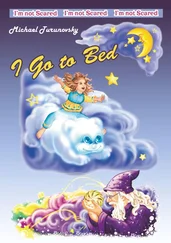Not long after, a terrible scene erupted in the diner when the actress threw down her utensils in the middle of an otherwise unremarkable meal and shouted something to the effect that the townspeople were the unfriendliest bunch of stuck-up bastards she’d ever encountered. Within weeks she had sold her enormous house in the hills and returned to California.
The nearby town is still baffled by her strange behavior. As for the actress, she has said nothing about her experience in our area, except that she was unaccustomed to town life and was glad to be back where she belonged.
Autumn, once the most popular season in this town of tall trees, is now regarded with dread, thanks to the bitter athletic rivalry between our two local high schools. The school in the neighborhood commonly called the Flats is attended by the children of the working class, who are employed by the town’s restaurants, motels, gas stations and factories, and who live in those low-lying areas most frequently plagued by pollution, flood and crime. The school in the Heights, on the other hand, is populated by the children of academics and property owners, who live on wooded hillside lots that offer panoramic views of our valley. Students at the Flats consider students at the Heights to be prissy, pampered trust-fund halfwits, while Heights students regard Flats students as mustachioed, inbred gas huffers. Historically, these class tensions were brought to bear in the annual football game, played at our university’s enormous stadium the last weekend in October.
Five years ago, however, some Heights players spray-painted ethnic slurs on the dusty American sedans of several Flats team members, and the Flats players retaliated by flinging bricks through the windows of the shiny, leased sports coupes of their rivals. Four years ago a massive mêlée at a fast-food restaurant landed players from both teams in the hospital. Three years ago the much-painted “Seniors’ Rock” in front of Flats High was rolled into a nearby creek, and the brand new sciences wing of Heights High was set on fire. Two years ago each coach was kidnapped by still-unidentified members of the opposing team and traded on Friendship Bridge at midnight of game day; and last year the Flats’ beloved mascot, the Marauding Goat, was disemboweled before the war memorial in Peters Park, while not a mile away the starting quarterback for the Heights was partially paralyzed in a hit-and-run incident outside a drive-up bank. The subsequent game was canceled.
This year’s game has also been canceled, but for a different reason entirely. A steep drop in the population of our town has made the existence of both high schools fiscally untenable, and beginning with the fall semester the two will be combined into a single entity, to be called Area High. It remains unclear how the rivalry will play itself out, but many seem convinced that the solution lies in targeting a common enemy, such as the students of nearby Valley High, thought by all to be buck-toothed hicks, or those of faraway City Regional, who everyone knows are greasy-haired gang-bangers. Meanwhile the peace here in our town remains uneasy, and we await with trepidation the turning of the leaves.
Eager to escape the pressures of life in a large town, we spent the night in a village between the lakes, at a bed-and-breakfast we had selected from a travel brochure and which, in all its particulars, seemed to suit us perfectly. But when we spoke with its proprietor, an elderly man with dyed black hair, we found him extremely unpleasant. His manner was lethargic, and he mumbled, and seemed caught in the grip of a deep depression.
When we ventured into the streets, we encountered other villagers as grim and uncooperative as our host: the man at the newsstand failed to respond to our greeting and gave us the wrong change; the waitress at a lunch counter ignored us for quite some time, then sighed loudly as she served our food; and a police officer refused to direct us to a pay telephone.
At last we discovered an ice cream parlor, its corner storefront brightly painted with whimsical designs, which was attended by a cheerful young man in a paper hat. We made small talk with the young man, and after a few minutes asked him why everyone in town seemed so glum. He told us there had been a fire that had claimed the lives of eleven schoolchildren, and that the village, consequently, was in mourning. He himself was from a neighboring county and hadn’t been around for the fire.
This information cast a pall over our weekend in the country, and we returned to our bed-and-breakfast tired and dispirited. In the morning we felt bad for condemning our host and his foul mood, and so, while checking out, we apologized, promising to return at a less trying time.
Our host seemed puzzled. It didn’t matter when we came, he said; the fire had happened forty years ago. When we asked him why everyone was still so miserable, he became angry and asked us to leave.
Driving home, we too became angry. Forty years, we decided, was more than enough time to get over it. Today the village strikes us as weak and stubborn, and we have not returned.
Our recently unseated mayor is again in the news, now that a certain incident related to his failed campaign has come to light. During the last month before the election, in a highly publicized and truly ambitious stunt, the mayor visited every house in our town, distributing pamphlets and soliciting questions and comments regarding his past term of office. In a neighborhood near the university, our newspaper reports, the mayor encountered a young woman, a graduate student in semantics, who asked him in, offered him a piece of cake and a cup of tea, then invited him to her bedroom, where, she contends, she locked the door and began to berate him about his suburban development policy.
According to the student, the mayor had already unbuckled his belt and was beginning to unzip his trousers when she made clear her true intentions. The mayor denies that he had begun to undress; he insists that he only went upstairs to help the student find some photocopied environmental impact reports she had misplaced and which she needed in order to make her point. At any rate, the result of the student’s ploy was a noisy argument heard by several neighbors, which, according to the student, ended in the mayor’s physically assaulting her, and, according to the mayor, ended with his agreeing to address her concerns in an upcoming zoning board meeting, and her grudgingly releasing him from the room.
The case is now under investigation, and public opinion, though not at all supportive of the student’s tactics, is nonetheless in favor of her version of events. My own sympathies, for partisan reasons, are also with the student, though I recall that the mayor canvassed our neighborhood that same day, and that I spoke to him less than two hours after the alleged encounter took place. I remember him having been perfectly composed, answering my questions clearly and with genuine interest. Whether this composure was evidence of a clean conscience or of a monstrous emotional detachment and moral corruption remains to be seen.
A friend from the city lived for some years in a basement apartment situated directly over a busy subway line. Because of the excessive noise, our friend’s rent was very low, and over the years he grew accustomed to, even enamored of, the trains’ deafening rumble as they passed during the night.
Recently the city undertook a massive subway reconstruction program, and the tunnel beneath our friend’s building was retired from regular use. Soon his landlord caught wind of the change and promptly raised the rent to a level far outside our friend’s meager budget.
Читать дальше










